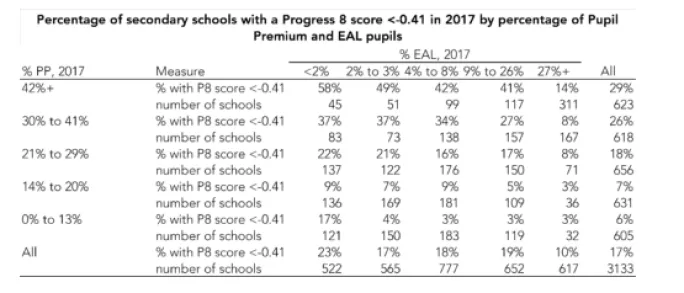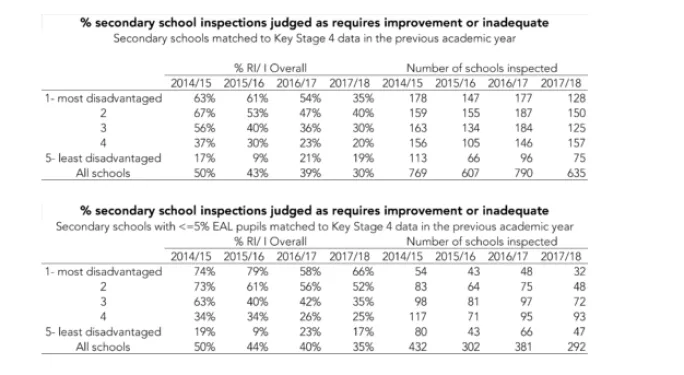Claims that schools in white working-class communities are receiving poor Ofsted ratings because they are unfairly penalised by Progress 8 are a “red herring”, a research body has said.
According to new analysis by Education Datalab, disadvantaged schools with a low proportion of pupils who speak English as an additional language (EAL) do get worse Ofsted inspection outcomes. However, this predates the introduction of Progress 8.
In April, a group of headteachers leading schools with intakes of predominantly disadvantaged white British pupils told Tes that they were more likely to receive negative Ofsted ratings because the Progress 8 accountability measure is loaded against them.
And in June an analysis produced by Ofsted appeared to suggest that schools in these communities were more likely to be rated “inadequate” or “requires improvement” - though Ofsted subsequently distanced themselves from this.
In a blog published today, Education Datalab examines these claims.
According to its analysis, while Progress 8 “doesn’t predict inspection outcomes with certainty”, a school achieving “a score below -0.41, with a few exceptions, results in going into requires improvement/inadequate”.
The analysis also finds that “the risk of achieving such a low Progress 8 score is higher among the most disadvantaged schools with lower proportions of pupils with EAL”.
The blog says that “on the surface” this suggests that “Progress 8 is systematically biased against schools with disadvantaged intakes and this in turn leads (in some part at least) to poor Ofsted outcomes”.
However, the analysis then takes a “longer view” by looking at Ofsted outcomes prior to the introduction of Progress 8, which became available for use in inspections in October 2016.
According to Education Datalab, even before the introduction of Progress 8 poor white schools were more likely to get negative inspection outcomes.
For example, in 2014-15, 75 per cent of schools in the most disadvantaged quintile with less than 5 per cent EAL pupils were rated “requires improvement” or “inadequate”, compared with a figure of 63 per cent for the quintile as a whole.
“So Progress 8 is a bit of a red herring here,” the blog says. “Even prior to its introduction, disadvantaged schools with low proportions of EAL pupils tended to get worse inspection outcomes.”
It adds: “These schools will need to be reassured that the inspection framework, including the new one due in September 2019, recognises the system-wide issue that some demographic groups of pupils do not achieve as well as others.”






